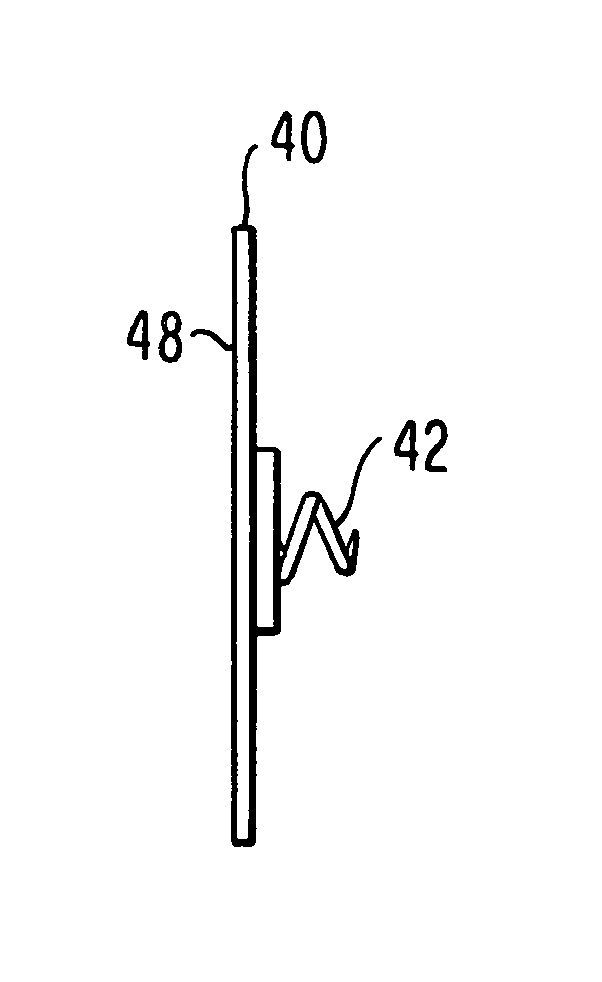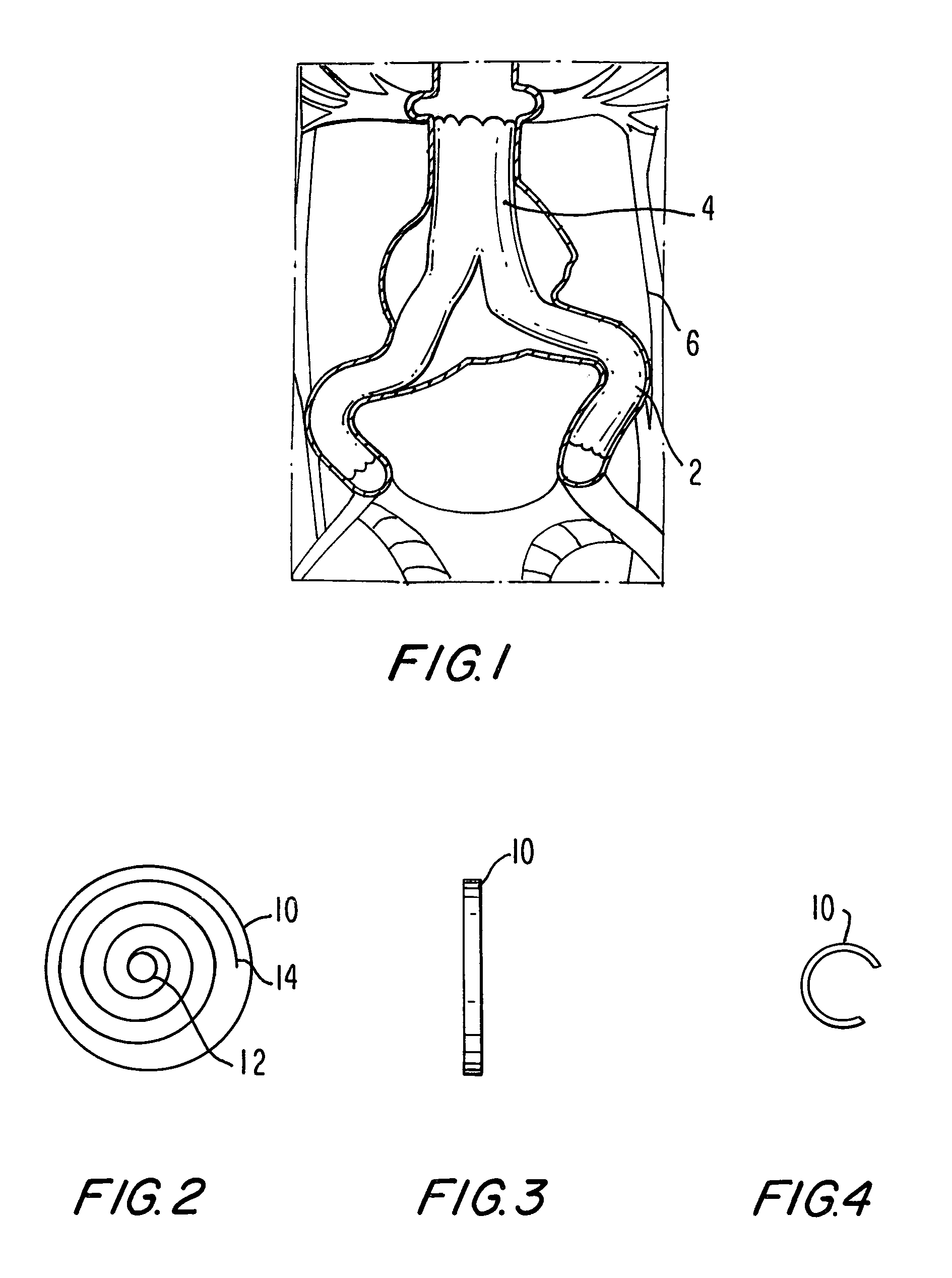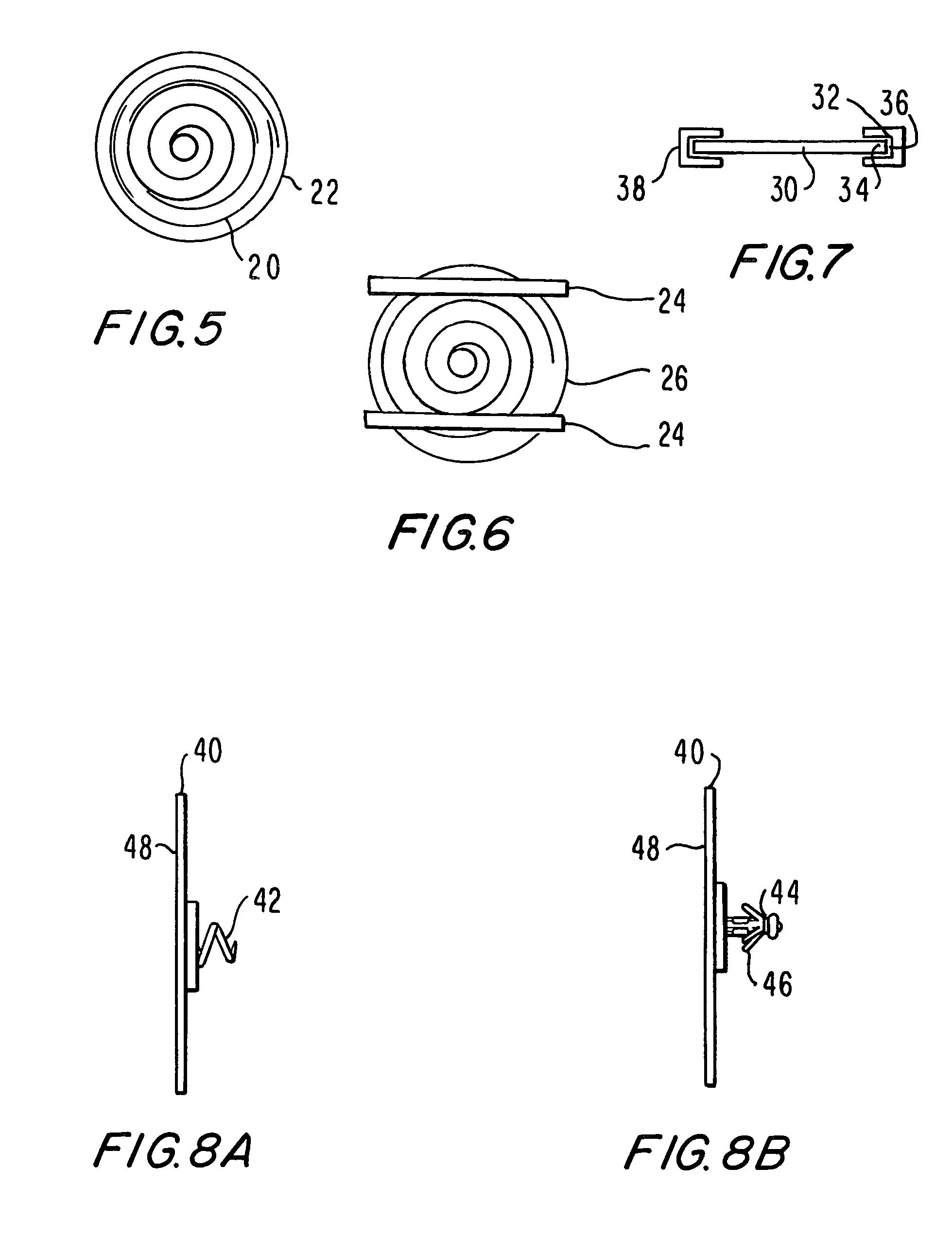Implantable wireless sensor
a wireless sensor and wireless sensor technology, applied in the field of implantable wireless sensors, can solve the problems of high patient injury risk, leakage, and sudden death of aortic arteries, and achieve the effects of reducing the risk of aortic arteries, and improving the safety of patients
- Summary
- Abstract
- Description
- Claims
- Application Information
AI Technical Summary
Benefits of technology
Problems solved by technology
Method used
Image
Examples
Embodiment Construction
[0050]The invention can perhaps be better understood by referring to the drawings. FIG. 1 represents a typical abdominal aortic aneurysm stent 2 that has been inserted into an abdominal aorta 4. Stent 2, which typically comprises a polymeric material, creates passageways within an aneurysm sac 6.
[0051]One embodiment of a sensor according to the invention is shown in FIGS. 2, 3, and 4, where a disc-shaped sensor 10 comprises a capacitor disk 12 and a wire spiral 14. FIG. 3 is a lateral view of sensor 10, and FIG. 4 is a lateral view of sensor 10 in a folded configuration for insertion. The fact that sensor 10 is sufficiently flexible to be folded as shown in FIG. 4 is an important aspect of the invention.
[0052]In FIG. 5 a ring 20 comprised of a shape memory alloy such as nitinol has been attached to, for example, with adhesive, or incorporated into, for example, layered within, a sensor 22, and in FIG. 6 strips 24 comprised of a shape memory alloy such as nitinol have been attached t...
PUM
 Login to View More
Login to View More Abstract
Description
Claims
Application Information
 Login to View More
Login to View More - R&D
- Intellectual Property
- Life Sciences
- Materials
- Tech Scout
- Unparalleled Data Quality
- Higher Quality Content
- 60% Fewer Hallucinations
Browse by: Latest US Patents, China's latest patents, Technical Efficacy Thesaurus, Application Domain, Technology Topic, Popular Technical Reports.
© 2025 PatSnap. All rights reserved.Legal|Privacy policy|Modern Slavery Act Transparency Statement|Sitemap|About US| Contact US: help@patsnap.com



